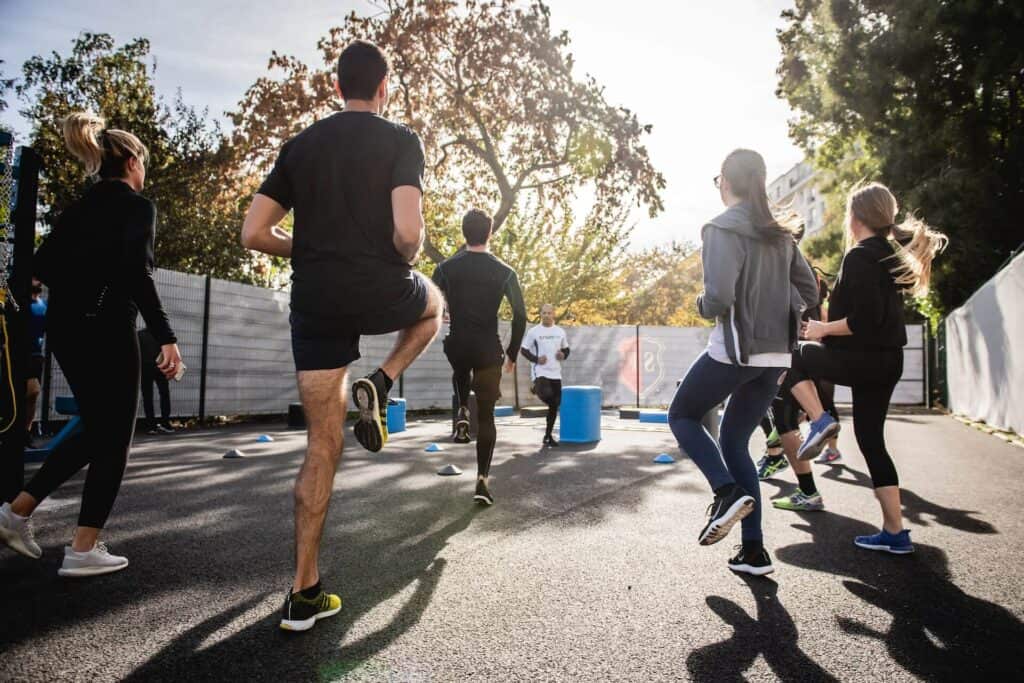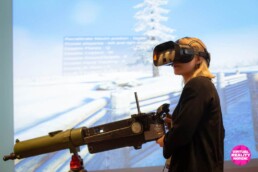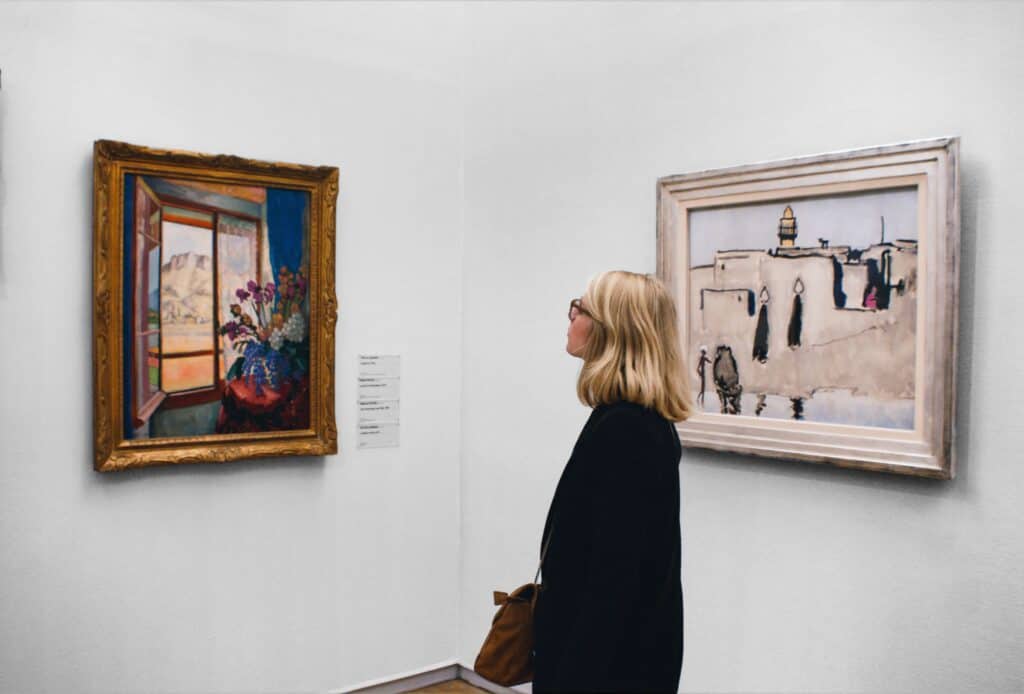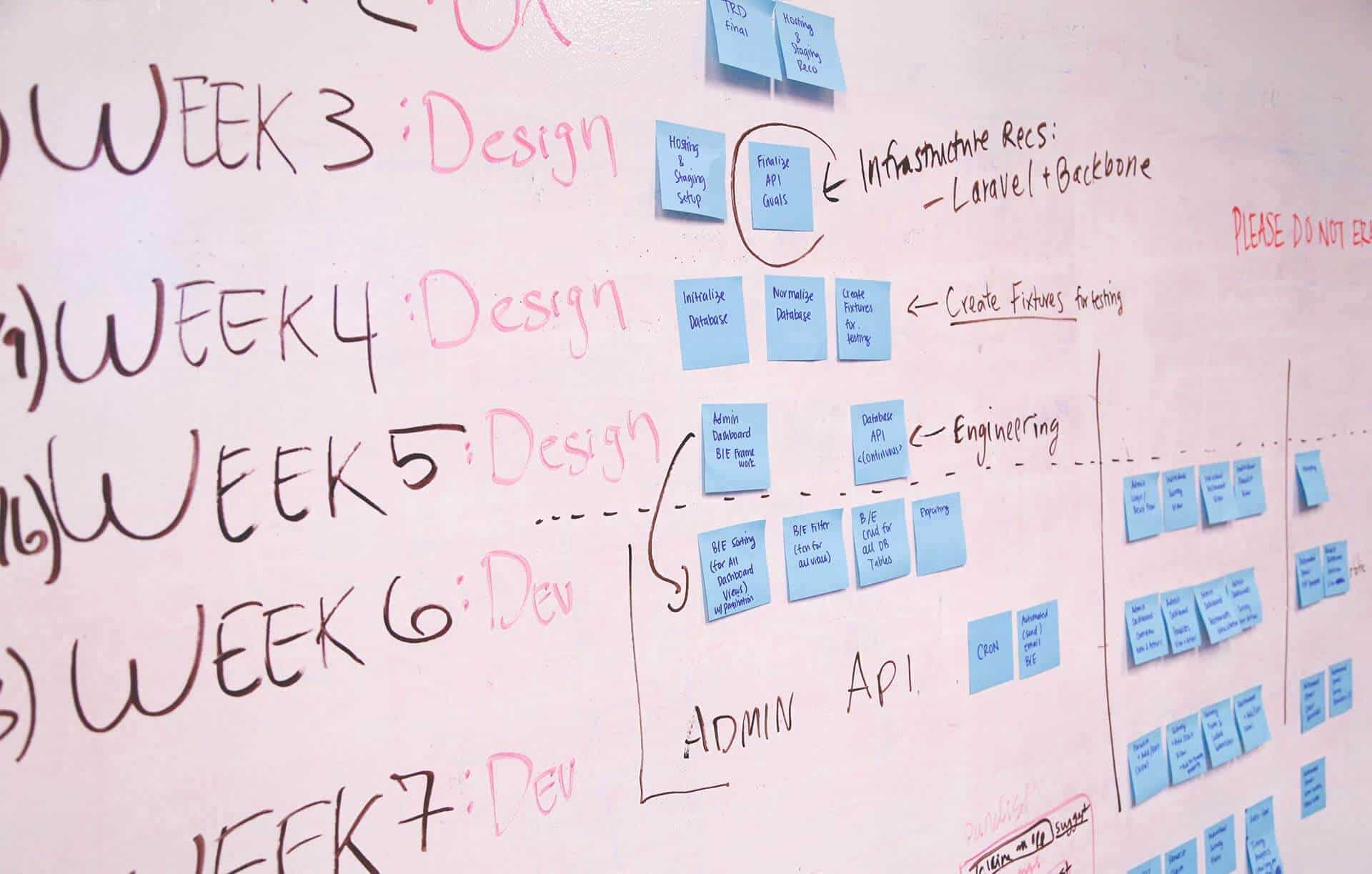5 Things You Didn’t Know Were Gamified
Gamification is rather a new concept that carries great importance in almost every field today. Especially in marketing strategies, gamification is one of the preferred ways to capture the attention of the audience.
Gamification consists of gaming elements integrated into a non-gaming environment. The reason for this incorporation is to increase the engagement level of the users. If you are wondering about these gaming elements, you can read our previous blog post about the topic here.
In this blog, we present the top 5 examples of gamification that you might not have thought about before. The examples will be categorized according to their level and how fast you can spot the gamification strategies used. Let’s start with an easy one!
Easy
Duolingo
Learning a new language might be an interest for many people at some point. One of the easiest ways to start learning a new language is online learning software because everyone can have access to them easily and they are mostly free! Therefore, the first example comes from one of the most popular language learning apps out there: Duolingo.
And, how does Duolingo use the game elements? Here are all the obvious gamified features that are used which makes it an easily distinguished example:
-
- It uses a level system: The lessons are divided into different levels and titles. The user can go to the next level only when the previous ones are completed or they can be skipped if the user is showing good performance on the level. At each level, there are no extreme differences in the difficulty level. There are 3 or 4 new words or phrases introduced in each level. Thus, the competency is neither too easy nor too difficult which can keep the motivation of the user at an optimal level.
- Reward system: In this specific software, users can collect rewards after completing a lesson. Opening a treasure chest can help users to collect in-app gems and some potions for x2 XP. These gems can buy the “streak freezers”, and “extra lives” in the app. This is a great example of engaging the user with the platform.
- Collecting badges: The user becomes more engaged and motivated to use the app more with the rewards, and that helps them to complete more lessons. After completing the lessons, the user can collect badges. Also, the earned badges are shown in the public profile of users. That is an excellent motivation source! Moreover, the app works to build a community by telling the users how many people are learning the same language at the same time. These sentences motivate the user and increase the community feeling.
- Streak: Showing the streak to the user and counting the consecutive days the app has been used is a great way to encourage them to continue using the app. When the user comes to the streak milestone, the software gives rewards such as giving a free trial of the premium version of the game for a couple of days. Also, the app gives some statistical information about the users who played regularly. For example, “Users who complete XX days in a streak are XX% more likely to complete the course!” These types of sentences are a great source of encouragement for the users.
Duolingo is a great example of gamification because of all the elements that are listed above. These elements keep the user encouraged, engaged and motivated. This way, users can learn in a fun way, and keep coming back to use the app!

Medium
Have you ever collected some in-app points to get some reward such as a free product? Or collected mile points to get a discount on your next flight on your most preferred airline? If your answer is yes, you already have experienced and used this level of gamified application! Medium-level gamified applications can be distinguished by some less obvious features. For example, using fidelity points or cards and loyalty points. Here are 2 examples in this matter:
Yelp
Yelp is a software that can be used via its website or apps. The main purpose of the app is to leave reviews, ratings, and photos of the businesses that the users visit. Also, there is a friends list in this app like Facebook. So, what kind of gamification elements do this app use?
-
- Elite status: Who would not like to feel special? Yelp gives this special feeling to its users! If they give frequent reviews, answer questions, and participate in the Yelp community they can have elite status. As it can be seen, this can keep users more active in the app.
Starbucks
Starbucks is also using a Reward app to keep customers purchasing their products. This app is an excellent example of gamification used in real life.
-
- Collecting stars: The user accumulates stars with every product they purchase in this app. Also, the graphical design makes it fun; the stars look like cups and you can fill the cups! The more purchases are made, the more benefits the user earns. These benefits can be a birthday gift or an extra cup of coffee. Who would not like to have these fun and diverse benefits while sipping on their favorite coffee?

Hard
In the following cases, the game elements are more subtle and difficult to find. Therefore, you may have not noticed these great examples of gamification!
Linkedin profiles
When signing up for LinkedIn, the steps that the user should follow to complete the profile are given in the beginning. LinkedIn is a platform to reach out to more people and widen the network to find more job opportunities. Therefore, LinkedIn shows a progress bar in the beginning as you are setting your profile. The more your progress bar is full, the easier it is to reach more people. This is a smart gamified application.
Tinder is also using the same method to make its users complete their profiles. So, if you want to reach more people outside of working hours, you can try Tinder and see its gamification!
Nike+ Run Club
Through the power of community, Nike+ Run Club is connecting people. Nike increases user retention by providing the opportunity to create a supportive community. Users can have this community by comparing the steps taken and distances run with other users of the app. This competitive feeling helps people to connect to other users and be more motivated. This is an excellent example of gamification because, with this app, users can customize their training program, and complete the challenges to win badges and trophies.

Honorable Mention
Finally, as an honorable mention, we would like to present an amazing real-life gamification example. Gamification does not have to be only in the digital world. Moreover, just because it includes game elements, it also does not mean gamification or games are only for younger people. Here, we can also highlight the fact that playfulness is a major factor in games in general as it can be seen in this specific example. Therefore, anything gamified should be fun, and the fun can come from even only being playful! The initial aim was to encourage people to use the stairs instead of the escalator to fight obesity. The research shows that after the stairs were turned into piano keys, people preferred stairs to escalators!
How extended reality (XR) brings value to museums
XR is an umbrella term that covers virtual reality (VR) and augmented reality (AR). Visiting museums and exhibitions can be both fun and educational. Thanks to XR technology, it is possible to create real-world experiences and get closer to history and art in a fun and immersive way.
XR takes the exhibition to a new level
XR offers a way to bring the exhibition to life in a whole new way. Virtual reality, for example, allows a user to travel in the middle of a natural site where they can view different species of animals in their actual scale, such as tigers or bears in their own habitat or see already extinct animals.
A visitor can be taken on a trip to a historic site to explore for example what the Colosseum used to look like a long time ago. More information about works of art can be presented with augmented reality, or sound effects or music can be added to them. Virtual reality allows the visitor to be creative and create their own art or to interact with existing artworks, for example editing them as they wish.
Alternatively, the whole physical exhibition can be brought to virtual reality, which in itself opens up completely new possibilities. In the museum, however, XR’s purpose is to support the exhibition and not just steal the spotlight.
XR enhances learning
Learning can sometimes be experienced even as challenging or dull, but museums provide an excellent learning environment for all ages. The interactive works enrich the visitor’s experience of the exhibition, and XR enables the visitor to participate and immerse themselves in the exhibition even better. A more intense experience is more impressive and there have been studies that XR also helps to recall what a person has experienced or learned more easily than without XR, this is especially useful for educational purposes.
Examples of XR used in museums
Many museums abroad and in Finland have utilized XR technology in their exhibitions. A well-known example is the Louvre, where visitors were able to explore famous paintings in more detail and how they had changed over time using virtual reality. The Finnish National Museum has also previously introduced virtual reality in an exhibition where visitors could step inside the painting and communicate with the characters in the painting.
MeKiwi’s XR projects
MeKiwi has created a fully immersive demo of Finnish Winter War VR-experience, known as “Operation Suentassu”. The project started when a new war museum was starting in Mikkeli and we were offering our services for a war VR experience. The intention was to create a realistic, short segment teaching about the horrors of war without it being a too raw experience. This demo project utilized the latest Mixed Reality technology, creating a mix of real and virtual worlds. The project utilized the newest VR-technology and authentic, deactivated Suomi KP/-31 as a controller instead of a traditional VR-controller. With this experience one can relive history that makes them feel like they are physically there.
We also implemented a virtual museum for the municipality of Muurame, where the user can view spaces as a 360° environment, most of which are based on actual places in Muurame. The user can for example visit Muurame church and view the choir performance in a 360° environment. The project was implemented in honor of the 100th anniversary of the municipality of Muurame and aims to present services, recreational opportunities, diverse nature and history of Muurame.
Contact us if you are interested in the topic or want to hear more about what kind of XR solutions we can offer.
SEO trends 2021
Certain trends can be followed both in clothing and websites, but this time we will focus on websites and more specifically on search engine optimization (SEO) 2021 trends.
Mobile friendliness
Today, almost everyone owns a smartphone, which means that websites are also browsed a lot via the phone. In the spring of 2021, Google announced a new algorithm change that will rank mobile-friendly sites higher. So when building a website, it is especially important to make it responsive and functional on all devices.
Create video content
Google searches are also performed as voice searches. Thus, keywords and phrases embedded in videos can improve the video itself or the website to be found on Google if the video is embedded on a site. As with site text content design, video design should take into account your target audience and the types of searches they may do. It’s also worth noting that when speaking, key phrases tend to be longer than keywords placed on web pages, because in general, speech is much more relaxed and there may be a difference in sentence formation when talking vs. doing a Google search.
Put the reader first
One SEO trend that is unlikely to ever go away is that when designing content, write the content for a person and not for a search engine. Text should be clearly written and clear should also be the overall layout of the site, as it assures the visitor to stay on the site longer, which Google also appreciates.
Google SMITH algorithm
In short, Google’s SMITH algorithm is able to understand long sets of text compared to the BERT algorithm, which only understands words and short sentences from short sets of text. That is, in the future, SMITH will help Google index better the most relevant search results for the user.
At MeKiwi, creating responsive and search engine-friendly websites is commonplace, so contact us today and let's take a look at your website needs, whether it’s a small update or a complete overhaul. You can contact Jonna here.
3 tips to reduce stress and balance work and life
Balancing work and life sounds simple, but still too many of us are struggling too often with stress that could be prevented if we just remember to take care of ourselves. Grab a coffee and go through these tips listed and get a boost to start balancing your work and life.
Get those good endorphins pumping!
We all feel stressed at some point in our lives, whether it is work related or not. Our bodies are not built for sitting, at least not for long periods of time. It is said that exercise is an effective stress reducer. So after workday, go outside, get some fresh air and exercise regularly to keep your mind clear and ready for future challenges.
Here at MeKiwi we have our own kiwisport-channel in which we set certain exercise goals and support each other to achieve these goals. You can also utilize gamified applications to motivate employees or yourself. Gamified apps bring fun to the exercise, that kind of apps are especially good for those who struggle to keep up with their exercise plan.
We love the power of gamification and using Virtual Reality technology in our daily life so we can suggest VR games like Beat Saberwhich can give you an efficient work-out experience and it is so much fun!
Keep on tracking
Balancing work and free time requires planning. When it feels like the work never stops and everything is all over the place, stop for a second and make a list of all the tasks that need to be done. Also prioritize and separate the most urgent tasks for every week. Also keep track of your free time and hold on to it. At MeKiwi we use Jira to help manage our work related tasks and projects. Another good tool to manage ongoing tasks is Trello, it is quite simple to use and anyone can get easily started.
Get offline!
This era of digitalization, and constantly beeping phones, that we are living in now almost forces us to be constantly online. Instead of being available all the time, after your work is done try switching off your phone and computer. Get offline for a moment and enjoy some me-time or immerse yourself in some good video game or try learning new skills that are not related to work to start finding the balance, and who knows, you might pick up a new hobby!
Adapting to new habits takes time, therefore it is good to start with small steps and not overdo it from the start. Hope these tips got you a bit more motivated to start working on your work-life balance!
Developing your business with gamification
What is gamification?
What does developing your business with gamification mean? Firstly, it's good to start with what gamification is. In gamification, game-like elements are added to non-gaming functions. The purpose is therefore not to entertain, but to use so-called gaming thinking to motivate the user, to support learning and problem solving. An important advantage of gamification is the immediate feedback the user receives on their own activities, for example, wellness applications that tell you if you have slept or exercised enough.
When it comes to implementing these solutions, each company knows their own business and customers best. When thinking about gamification, you need to know where you want to engage the customer and what you want to resolve. Admittedly, gamification does not have to be limited to the customer. Employee motivation and commitment can also be increased through gamified experiences. The more motivated the employee, the better service the customer receives.
Gamified application engages
The purpose of gamified application is to motivate the user or customer and get him to return to the service later. The application can take advantage of elements familiar from video games such as scoring or points. You can get points even by registering in the application and, for example, updating your own profile. By collecting points, the app can have a progress bar that, when filled, gives the customer or user virtual coins. These virtual coins can then be used to shop at the actual store or company.
In some games, competition against other players is a key feature. In this case, a scoreboard measuring progress can be built into the application, which is used to compare users with each other. This creates competition between users, which increases loyalty to the application. By collecting points and accumulating progress, the customer or user can earn virtual badges or medals. Badges of Merit are also used in the world of entertainment games, which are a sign of crossing or achieving a certain stage or milestone. The use of merit tokens increases the user's loyalty to the application.
Serious games aiding teaching and training
Serious games are meant to be not only entertaining but also educational, although in a fun way. Serious games are used in many different fields, for example in teaching, they help students to focus on teaching in engaging ways. Games can be used to learn new languages or even develop math skills.
Serious games and gamification have many different benefits. Brain games are games that are made to help with cognitive development. Brain games consist of various problems and puzzles that the player must solve. It has also been studied that students remain focused for longer when serious games are used in teaching. Immersion in games also added positive feelings.

If you have any questions about gamification, we will be happy to tell you more. Contact Jonna 050 307 6756 or Merih 044 751 0096. The MeKiwi team will be happy to plan with you how to make your digital solutions more engaging and motivating through gamification! Call us and we will tell you how we can help.
Our account manager Jonna Ranta acted as an expert in an article published by Bonnier Pro, which dealt with increasing customer commitment and loyalty through gamification. Here you can find the attached article which is in finnish only.
Bonnier_Pro_ASI_1-2020
SOURCES
Kortela, A. 2020. Asiakkaiden sitoutumisen ja lojaalisuuden kasvattaminen pelillistämällä. Viitattu 7.9.2020.
Deese, A. 2020. 5 Benefits of Gamification. Viitattu 4.9.2020, https://ssec.si.edu/stemvisions-blog/5-benefits-gamification
Grendel Games 2020. What are serious games. Viitattu 4.9.2020, https://grendelgames.com/what-are-serious-games/
Kitola, M. 2013. Pelillistäminen ja mobiilisovellukset. Viitattu 7.9.2020, https://jyx.jyu.fi/bitstream/handle/123456789/42915/1/Mikael%20Kitola.pdf
Promoting digital equality for young people in Finland
Digitalisation has currently become a trendy buzzword, and many industries are relying on the advances made in the field of information technology.
Most of the services in Finland and the rest of the world have moved to the online world, so it is important that today's young people have the opportunity to try and adapt to this ever-changing digital environment.

The Yrityskylä learning solution for primary school meets these needs with its own socio-economic education platform, teaching sixth-graders about working life and society. In the small town made by the schoolchildren, students also learn to act as responsible consumers and can, for example, test the leisure opportunities offered by digitalisation with the latest services, such as the Yrityskylä VR art experience game, Controlled Chaos.
MeKiwi was happy to participate in the production of a virtual art experience in Yrityskylä for sixth-graders across Finland. The art experience called Controlled Chaos allows children (and adults) to create their own immersive work of art in virtual reality.
The main priority for Yrityskylä was to create an experience that does not require schoolchildren to have previous virtual reality experience before trying out the art experience, as not all children have the latest technology at home.
With our expertise in UX design and VR game development, we were able to create an intuitive experience where rules and instructions could be abandoned and which relied solely on children’s natural curiosity and their ability to adapt to new things in a short amount of time.
Design pillars for a smooth VR use experience
- Base it on real life. The key to a smooth VR experience is to think about what the user would do in a real situation. Pay special attention to your own behavior during the day and think about how it would turn into a VR experience.
- Avoid written instructions. Reading text in a virtual reality environment can be difficult for those users with poor eyesight. It can also lead to translation problems if your target audience is multilingual. One way around this is to use audiovisual cues, such as arrows to indicate points of interest, as well as haptic feedback through the controller.
- Keep it simple. Virtual reality can be a mind-boggling experience for a first-timer, and getting used to this new device can take some time. Therefore, product developers should strive to keep the simulation simple in terms of both graphics and tasks. This way, users can familiarize with the platform. As you gain experience with the following exercises, you can be given more complex tasks.

Creating innovation together
In November, MeKiwi participated in the Innovation Bootcamp in Pokhara, Nepal, which aimed to create new innovations for local needs. The event was organised by the Tribhuvan University (Institute of Engineering) in cooperation with the Nepal Go Association, an association founded in Oulu to promote education and employment in Nepal. The project was funded by the Gandaki provincial administration, and Mukti Paudel from Nepgo ry was the project leader for both countries.
Nepgo ry invited Finnish companies to participate in the event to mentor students and solve challenges together. MeKiwi was excited by the idea and decided to participate. From Finland came also Raimo Korhonen from KeepLoop, Kimmo Paajanen from OAMK and two guest lecturers, Janne Korhonen, PhD consultant from Aalto University and Anu-Maria Laitinen, knowledge management consultant.
The five-day event took place on the Paschimanchal campus. In addition to the invited companies, the event was attended by around 30 students and experienced local mentors, each with extensive knowledge of the issues at hand.
Challenges and ceremonies
The event started with a formal welcome ceremony on campus in honour of the guests. The mayor of the city and a local minister were also invited. During the ceremony, the guests were given flowers and were dressed in colourful Nepali headdresses. The morning was full of celebrations, as was the evening of the last day of the event.
The Bootcamp itself started with six different challenges to which the university students had to develop a solution together with representatives of companies. MeKiw was tasked to create a report on the level of digitalisation in Nepal, both on the business and education side. In addition to the report, the team looked at how to get parents more involved in their children's studies. As a solution, a "Wilma" type service, which we are also familiar with, was proposed. The mayor immediately agreed to pilot-test 10 schools, but full commercialisation of the service is a prerequisite for real implementation.
Again next year?
Samuel Kuosmanen, CEO of MeKiwi, was very pleased with the quality of the event. MeKiwi's goal for this trip was to identify business opportunities, build a network and identify local expertise. All these elements were implemented beyond expectations.
"I would definitely go again, as long as the trip is well planned in terms of purpose and appointments. It took a surprisingly long time to travel, but an international airport is being built in Pokhara, which will speed up travel in the future," Samuel summed up when asked if he would go again.
About Nepal
Nepal is a poor developing country surrounded by mountains, where more than 50% of the population lives on less than a dollar a day. Although people come from very simple backgrounds, they are very welcoming. The mountains have kept trade very limited with countries such as India and China. Recently, there has been a wake-up call on this issue and there is now a strong push for change. Tourism has played its part in boosting development and growth prospects are already looking bright. This will also create new opportunities, for example for Finnish educational exports and other cooperation. Now is therefore a very good time to invest in Nepal.
Open innovation as a key driver of growth
MeKiwi's growth and development is based on the principles of open innovation. They have boosted productivity and efficiency and increased the number of business opportunities. We want to share our approach to open innovation with others, as the topic is becoming increasingly popular. Open Innovation is an important part of the European Union's next framework programme, Horizon Europe.
Open innovation is based on knowledge and technology sharing and collaboration between companies. Cooperation has contributed significantly to MeKiwi's rapid development and growth.
MeKiwi was one of the companies surveyed in a study on the innovation process of start-up companies carried out as part of the Oulu Innovation Alliance's "Accelerating Innovation" project. The study was also used as the basis for a PhD thesis at the University of Oulu School of Economics.
The thesis divided the innovation process into three stages. In this blog, we describe how we have implemented open innovation at these stages, using the digital learning solutions we have developed as examples. These sections are structured according to the appropriate open innovation principles.
We don't need to do our own research to create business
Finding business opportunities and identifying resources are part of the first stage of the innovation process. The partnership with PlayGain provides open innovation on both sides. The involvement of MeKiw provided PlayGain with the necessary resources to commercialise its research activities. PlayGain, on the other hand, offered MeKiwi the opportunity to do business with its own knowledge capital. The result of this collaboration is Productive Manager, an educational game for managers and HR professionals, based on research on the link between well-being and productivity.
We don't need all the top talent to work for us
In the actual implementation phase, projects need the right combination of knowledge and skills. This is done both by strengthening internal skills and by acquiring them from outside. MeKiwi has been able to grow by taking on progressively larger and more challenging projects. Success in combining internal and external expertise is an important factor in this.
The cooperation with Yrityskylä, which teaches youth economic and working life skills, started with the renewal of teaching materials for the Upper and Lower Secondary Schools and the construction of a comprehensive Teacher portal enrolment system. The collaboration will now continue to produce the VR solution to be released later. This was made possible by MeKiwi's active involvement with the Oulu Game Lab. By participating in Oulu Game Lab events and coaching students, game entrepreneurs have kept up to date with the growing body of knowledge. Among the students in autumn 2018, a VR team stood out, ready to go straight to work. MeKiwi recruited the whole team, which allowed us to create the ideal mix of skills for the different projects. The development teams will continue to be supported from outside the company as necessary. Reliable partners include Kaamos Games, Happy Hobgoblin and Reforged Studios.
The best combination of internal and external ideas
The final stage of the innovation process is delivering the product to the customer or launching the product on the market. This phase also includes the subsequent updates and maintenance activities. From an innovation perspective, this links back to the previous step, where the right mix of knowledge and skills will determine success.
The support provided by public actors in the innovation ecosystem should be utilised. Fairs are a great place to network with other entrepreneurs and experts. A trip to the BETT2019educational technology fair organised by the Future of Smart Learning Environments project gave us a valuable insight into developments in the sector as a whole.
Taking a product to market often involves participating in international trade fairs. BusinessOulu business services' export-related services, such as export promotion trips, are an important enabler of internationalisation for small businesses. VRKiwi, MeKiwi's virtual reality games division, has travelled to international game fairs with our own product, VR Cave Digger. Our own marketing team is complemented, where necessary, by Kuvion, a games marketing digital company.
Travel to trade fairs also plays a role in how future solutions are produced. Participation in trade fairs increases understanding of customers and the industry. At the fair, you can find partners to collaborate with and share ideas. This will help identify business opportunities and resources. A new innovation process begins.
"I don't know if it makes sense to distinguish between external and internal innovation," says Samuel Kuosmanen, CEO of MeKiwi. "Both are the result of interaction. Let's try to understand what it feels like from another's perspective. That is why all networking events are valuable. We have always been curious and often participated in innovation services and events."
Involvement in training organisations, for example as mentors, has proved particularly useful.
"We have both made great recruits and got great ideas from the events," summarises Kuosmanen. MeKiwi is about to start a programme where employees are able to spend a certain amount of working time developing their own ideas. " Let's create the conditions for innovation by giving people the freedom during their training to put their ideas into practice, and develop the skills they want to develop."
MeKiwi's practical approach to open innovation
Open innovation creates opportunities, especially for a small company in its early stages, which still has the capacity for rapid change. MeKiwi's approach to open innovation has evolved from a practical need to generate business and an attitude of not leaving the customer alone. We offer comprehensive solutions and bring together the resources you need. At the same time, our own capacity for ever more ambitious development work is growing.
Why is open innovation important now?
The commercialisation of research offers opportunities for small technology companies that are able to operate according to the principles of open innovation. Right now, significant investments are being made in this area.
Horizon Europe is the European Union's future framework programme for research and innovation for the period 2021-2027. The programme covers support for research and innovation from the idea stage to market launch, complementing national and regional funding.
One of the three pillars of Horizon Europe is open innovation. It includes the challenges of translating research results into marketable innovations. This will be done by developing innovation ecosystems and supporting the commercialisation and scaling-up of innovations.
On 7 June 2019, information about Horizon Europe will be available especially for ICT companies at the Tellus Innovation Arena at the University of Oulu.
At the Horizon Europe and ICT event on 7 June from 8.30-11am, you can also listen to MeKiwi's Customer Success Manager Jonna Ranta, who will be happy to talk about commercialisation of research and other innovation issues. Come have a chat with Jonna!
Jonna can also be reached by phone on (+358) 50 307 6756.
Sources:
- Brown, T. (2009). Change by design: How design thinking can transform organizations and inspires innovation. New York (N.Y.): HarperBusiness.
- Chesbrough H. (2003) The era of open innovation. MIT Sloan Management Review; 44:35–41
- Crossan, M & Apaydin, M. (2010). A Multi-Dimensional Framework of Organizational Innovation: A Systematic Review of the Literature. Journal of Management Studies, 47(6), 1154–1191.
- Parida, V., Westerberg, M. ja Frishammar, J. (2012). Inbound Open Innovation Activities in High-Tech SMEs: The Impact on Innovation Performance. Journal of Small Business Management 2012 50(2), 283–309.
- Sydänmaanlakka, P. (2009). Jatkuva uudistuminen: Luovuuden ja innovatiivisuuden johtaminen.Hämeenlinna. Talentum Media Oy. 293 s.
AI as a sparring partner for managers
A game developed to train managers using artificial intelligence acts as a personalised sparring tool, explaining the impact of their choices and giving advice on where to improve. As a result, well-being at work improves and staff productivity increases - both in the game and at the workplace.
The discussion around AI often focuses on situations where it replaces human work. However, AI can also help people advance in what will remain an area of human interaction - leadership.
The project is the next phase of the Productive Manager training simulation, developed to coach managers and HR staff. SOL and Antell, among others, are already users of the game and will also be pioneers in introducing the future AI-based version of it.
Improved quality of working life - improved staff productivity
Problems undermine the quality of work life. Good management practices improve it. This is something that creates issues in day-to-day management. The Productive Manager learning game provides real-life management problems. The choices you make will either improve or reduce the quality of your working life.
In the Productive Manager simulation, progress is based on the values calculated by the game; the Quality of Working Life (QWL) index and the motivation theory linked to it.
"It is the focus on motivation that makes the simulation so accurate. Combining motivation theory with QWL's calculations is an essential factor in being able to build such a game," explains Marko Kesti, CEO of PlayGain Oy, the company behind the game and an associate professor at the University of Lapland, whose long-term research has resulted in the well-being and productivity metrics that form the basis of the game.
Leadership has a direct impact on well-being at work, which in turn has a direct link to staff productivity. The human resource productivity function is also a theory developed by Marko Kesti and recognised by the international scientific community, which allows Productive Managers to measure player development. This allows the game to show the player the impact of their choices not only on staff well-being, but also on financial performance.
Through the development of a manager's skills, improved performance in the game leads to improved performance in the organisation.
AI as a personal sparring partner for managers
Productive Manager has been implemented in the first user companies for about a year. In addition to the original research data, there is now available data on players and on the development of Quality of Work Life (QWL) in companies using the Productive Manager simulation.
Now, AI has been used to create predictive analytics in the training simulation, which takes into account not only job quality and motivation, but also the player's personal profile. A manager does their job with their own personal touch. What works for one may not work for another.
Using the data generated during the game, the AI becomes the manager's personal sparring partner.
"The AI built into the game already takes into account the player's personal strengths and areas for improvement, and provides customised help, for example by suggesting learning more about a topic. In the future, this support will only become more accurate as the amount of data grows," says Marko Kesti.
Predictive analytics can help prevent issues
What is AI in this context and what do we do with it?
"To put it simply, since the Quality of Work Life Wellbeing function and the Productivity of Work Life Wellbeing function are formulas that are calculated from variables in the work environment, this calculation would simply be converted into a software that calculates the same results from the same variables that the player encounters in different game situations," explains Jaakko Asikainen, CTO of MeKiwi, who led the development of the game technology.
"As such, a computer program would still not be a simulation, but it has an architecture and dynamics built into it based on game theory, which motivates and guides the player and at the same time creates learning," Asikainen continues. "Productive Manager is unique because it has a game architecture that matches reality."
Gaming collects more data, allowing the AI to make better and better predictions. This is the biggest benefit of AI for users. When an important area for leadership improvement emerges during the game, the problem may not arise at all.



















